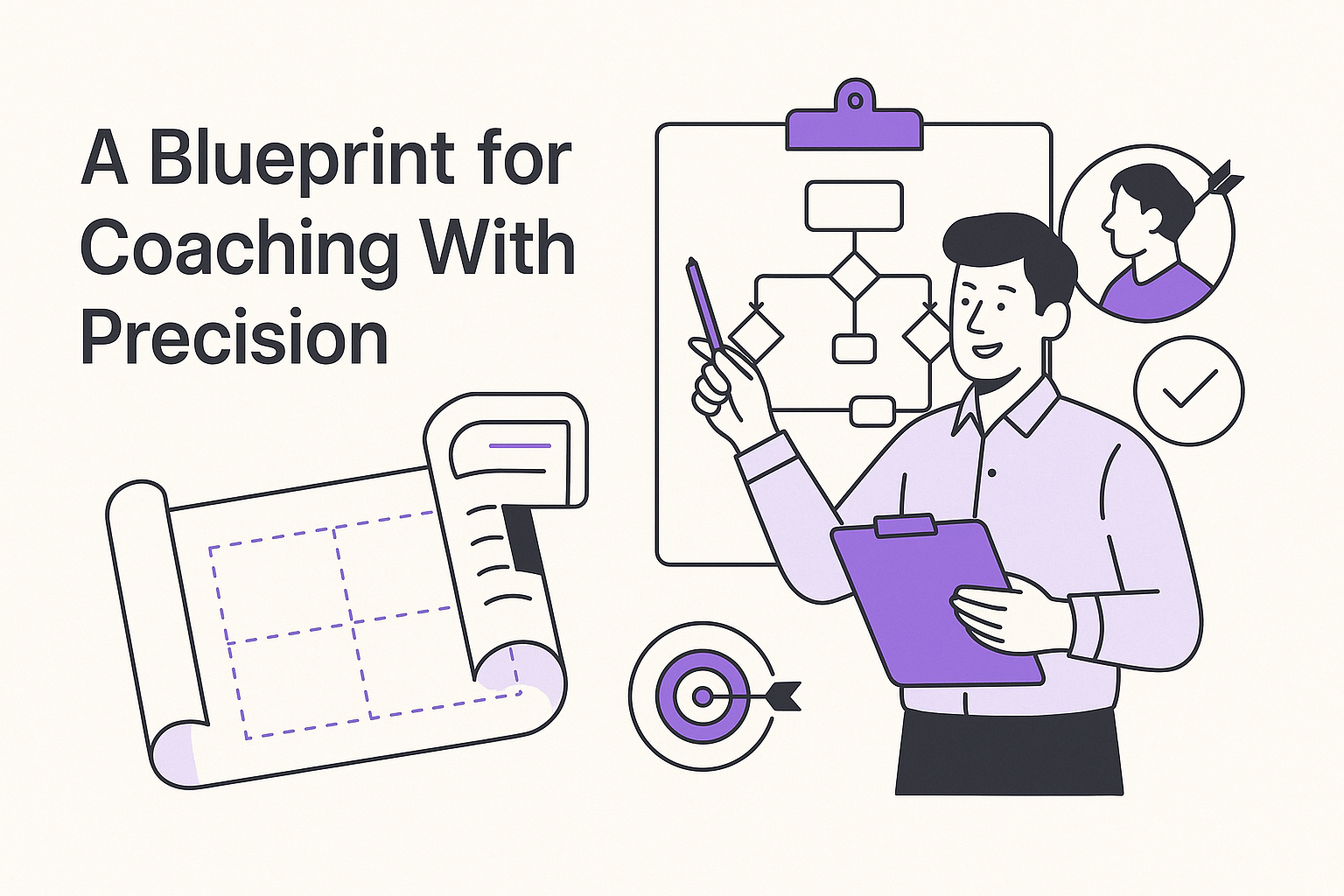AI-Powered Text Analytics: Actionable Tips
-
Bella Williams
- 10 min read
With the rapid advancement in technology, businesses are increasingly turning to AI-powered text analytics for valuable insights. Text analytics tips can significantly enhance how companies interpret vast amounts of customer feedback and market data. This journey begins with an understanding of the crucial components in the data ecosystem that supports effective analysis.
By harnessing AI, organizations can streamline their processes and uncover patterns that traditional methods may overlook. From data collection to natural language processing, these tips empower businesses to transform raw text into actionable intelligence. Embracing AI-driven strategies not only improves decision-making but also fosters a deeper connection with customers through understanding their needs and preferences.
Generate visualizations from your qualitative data. At Scale.

Implementing Effective Text Analytics Tips
Implementing effective text analytics tips begins with understanding the lifecycle of how text data can be transformed into valuable insights. Start by ensuring proper data collection, which lays the foundation for subsequent analysis. Consider using diverse sources such as social media, customer feedback, or support interactions to gather a broad range of text data. Text preprocessing techniques are essential for cleaning and organizing the data, allowing your analytics tools to function optimally.
Utilizing artificial intelligence can significantly enhance the insights derived from text analytics. Begin with natural language processing (NLP) tools to break down the intricacies of human language, extracting context and meaning from your data sets. Integrating machine learning algorithms can help identify patterns and trends that might not be immediately obvious. By implementing these strategic text analytics tips, organizations can unlock deeper customer insights and improve decision-making processes.
Understanding Text Analytics Fundamentals
Text analytics involves the systematic collection and analysis of unstructured text data to uncover valuable insights. Initially, the process of data collection establishes the foundation for effective text analytics. This step may include gathering data from customer feedback, social media, or recorded conversations. A well-defined strategy for collecting relevant data is essential with the ultimate goal of generating actionable insights.
The next critical component is text preprocessing techniques, which help refine the raw data for analysis. This includes tasks like cleaning the text, removing noise, and identifying key terms. Implementing effective text analytics tips at this stage maximizes the accuracy and relevance of the insights derived. By understanding these fundamental aspects of text analytics, organizations can effectively harness the power of the data they collect and transform it into strategic advantages.
- Step 1: Data Collection
Data collection is the cornerstone of effective text analytics, shaping the insights you can derive. Start by gathering relevant data from diverse sources, such as customer feedback, social media posts, and internal documents. Ensure your data is comprehensive, as a broader dataset leads to richer analyses and more nuanced insights.
Next, focus on establishing clear objectives for your data collection process. Identify the specific questions you want to answer and the insights you hope to uncover. This targeted approach will streamline your efforts and enhance the relevance of the data collected. Finally, prioritize data quality to avoid errors that could skew your findings. By following these text analytics tips, you're setting the framework for an insightful analysis and meaningful decision-making.
Key Points to Consider:
- Source Diversity: Collect data from different platforms to gain various perspectives.
- Define Goals: Be specific about what you wish to achieve through your analysis.
- Quality Matters: Ensure the data gathered is accurate and relevant for the best results.
- Step 2: Text Preprocessing Techniques
Text preprocessing is a critical step for successful text analytics. Before diving into analysis, it’s essential to clean and organize your data. This stage involves removing unwanted characters, standardizing formats, and addressing inconsistencies. Proper preprocessing ensures that the text data you work with is reliable and more suited for effective analysis.
There are key techniques in text preprocessing that you should consider. First, tokenization involves breaking down text into meaningful units, such as words or sentences. Next, stemming and lemmatization help in reducing words to their base forms, making analysis more uniform. Moreover, stop word removal eliminates common words that may not add value to the insights derived, enhancing focus on significant terms. Lastly, text normalization standardizes the text for consistency, assisting in achieving more accurate analytics results. By applying these preprocessing techniques, you're more likely to gain actionable insights through your text analytics efforts.
Leveraging AI for Enhanced Insights
Integrating AI into your text analytics framework can dramatically enhance insights. Natural Language Processing (NLP) techniques transform unstructured text into structured data, allowing businesses to extract meaningful patterns and trends. This process not only automates data analysis but also elevates the quality of insights derived from customer interactions, reviews, and feedback.
To fully harness AI's capabilities, combine machine learning models with text analytics practices. By continuously training models on existing data, businesses can improve accuracy and anticipate customer needs more effectively. Follow these key steps: prioritize data collection from diverse sources, preprocess text to clean and standardize formats, and analyze results using advanced analytics tools. Implementing these strategies will ensure your organization can derive actionable insights that truly inform decision-making processes. Ultimately, these text analytics tips will foster a deeper understanding of customer sentiments and preferences, leading to improved strategic outcomes.
- Step 1: Natural Language Processing (NLP)
Natural Language Processing (NLP) serves as the foundation for effective AI-powered text analytics. By utilizing NLP, businesses can transform unstructured text data into valuable insights. This initial step involves parsing, understanding, and interpreting language, allowing systems to understand the context and semantics of the content. Implementing NLP techniques ensures that data is not only gathered but also processed in a way that reveals actionable patterns.
Several fundamental techniques can enhance your NLP efforts. First, tokenization breaks down text into smaller, manageable parts, allowing for more nuanced analysis. Second, sentiment analysis helps determine the emotional tone, guiding businesses to gauge customer feelings and needs. Finally, named entity recognition (NER) identifies key information, such as names and dates, further enriching the dataset. These text analytics tips will ensure that organizations effectively harness the power of language, facilitating better decision-making and strategizing.
- Step 2: Machine Learning Integration
Integrating machine learning into your text analytics process significantly enhances the insights you can derive from data. By utilizing algorithms that learn from previous interactions and data patterns, you can improve the accuracy of your analytics tasks. This step is essential for transforming raw data into actionable insights, enabling businesses to make informed decisions based on real-time feedback and trends.
To effectively integrate machine learning into your text analytics framework, consider these key elements:
Data Quality and Preparation: Ensure that your data is clean and structured. This foundational step enhances algorithm performance and leads to more reliable insights.
Model Selection: Choose the appropriate machine learning models based on your business objectives. Whether it’s classification, clustering, or regression, the model type will dictate the results you obtain.
Continuous Training: Machine learning models require regular updates to adapt to changing data and contexts. This practice helps maintain the relevance and accuracy of your insights.
By following these steps, you can effectively harness the power of machine learning, enhancing the overall efficiency and accuracy of your text analytics efforts.
Evaluate Performance on Customer Calls for Quality Assurance.
Advanced Strategies for Optimal Results in Text Analytics
In the realm of text analytics, advanced strategies can significantly enhance your outcomes. A crucial approach is automating text analytics workflows, which streamlines data processing and interpretation. By utilizing predictive analytics, organizations can forecast trends and patterns, making proactive decisions that align with customer needs. This predictive capability allows teams to focus on strategic initiatives rather than sifting through vast amounts of data.
Incorporating sentiment analysis adds another layer of depth to your insights. Understanding not just what customers say, but how they feel about it is essential. This understanding informs product development and marketing strategies, ensuring they resonate with your audience. Additionally, evaluating and improving text analytics performance through established performance metrics and KPIs ensures that your strategies evolve with changing market dynamics. Continuous improvement practices further sharpen your analytics capabilities, leading to better results over time. Implementing these advanced strategies results in powerful text analytics outcomes, ensuring your organization stays ahead in a competitive landscape.
Automating Text Analytics Workflows
Automating text analytics workflows can tremendously enhance the efficiency of extracting valuable insights from unstructured data. Many organizations seek to streamline their processes from data collection to reporting using various AI technologies. This automation allows teams to focus on analysis instead of tedious manual tasks.
To effectively automate workflows in text analytics, consider the following key steps:
Utilizing Predictive Analytics: Implement predictive models that help forecast trends from historical text data. This can guide decision-making and identify potential opportunities while minimizing uncertainty.
Incorporating Sentiment Analysis: Automating sentiment analysis provides real-time insights into customer feelings and opinions. This can help businesses react promptly to feedback, enhancing customer satisfaction.
By automating these processes, organizations can significantly improve their text analytics capabilities, enabling deeper insights while saving time. Overall, adopting these text analytics tips will result in more actionable and informed decision-making.
- Step 1: Utilizing Predictive Analytics
Utilizing predictive analytics is a powerful first step in enhancing your text analytics efforts. By analyzing historical data and identifying trends, predictive analytics allows you to forecast potential outcomes and make informed decisions. Understanding the context of your data enables you to uncover insights that can improve product development or customer satisfaction.
To effectively implement predictive analytics, focus on two essential elements. First, gather a comprehensive dataset that includes various customer interactions, feedback, and relevant metrics. Second, employ advanced statistical models and machine learning to identify patterns and predict future behaviors. By aligning these strategies with your goals, you can create actionable insights that drive success. Remember, predictive analytics not only enables you to anticipate trends but also empowers you to act wisely based on those predictions, ultimately improving your overall strategy in text analytics.
- Step 2: Incorporating Sentiment Analysis
Incorporating sentiment analysis into your AI-powered text analytics strategy is crucial for gaining a comprehensive understanding of customer emotions. This process allows businesses to evaluate customer feedback and identify underlying sentiments that influence buying decisions. By analyzing positive, negative, and neutral sentiments, companies can tailor their marketing strategies and improve products based on customer needs.
To effectively implement sentiment analysis, consider the following steps. First, gather data from various sources such as social media, reviews, and customer interactions. Next, utilize natural language processing (NLP) tools to analyze the text data, extracting sentiment scores. Additionally, visualize these sentiments to highlight trends over time. Finally, use the insights gained to make informed decisions about product development and customer engagement strategies. These text analytics tips will enhance your understanding of customer perspectives and guide your business towards more effective strategies.
Evaluating and Improving Text Analytics Performance
To effectively evaluate and improve text analytics performance, consider several key aspects. First, establish performance metrics and key performance indicators (KPIs) that align with your business objectives. These metrics could include accuracy, precision, recall, and processing speed. By regularly monitoring these KPIs, you gain valuable insights into your text analytics model's strengths and weaknesses. This data helps inform necessary adjustments for improved outcomes.
Next, implement continuous improvement practices. Encourage feedback loops where users provide insights on the model's performance. By fostering a culture of iterative testing and refinement, you ensure that your text analytics system evolves with changing needs. It’s essential to embrace new data and adopt the latest advancements in text analytics technologies. Keep exploring innovative methods, tools, and approaches, as this will enhance your analytic capabilities and drive better decision-making. Together, these strategies serve as actionable text analytics tips for enhanced performance.
- Step 1: Performance Metrics and KPIs
To enhance your AI-powered text analytics strategies, understanding performance metrics and KPIs is crucial. These metrics enable you to assess and evaluate the effectiveness of your text analytics initiatives over time. By establishing clear KPIs, you create baseline expectations that help identify areas for improvement and increased efficiency.
It's essential to focus on both quantitative and qualitative measures. For example, quantitative KPIs might include the rate of data processing or accuracy of data categorization. Qualitative insights can involve user feedback on the output’s relevance and usability. Tracking these metrics effectively will empower you to refine your processes continually, ensuring that your text analytics are aligned with your organizational goals and providing actionable insights that drive decision-making. Implementing these performance metrics will take your text analytics efforts to the next level, leading to more informed strategies and improved outcomes.
- Step 2: Continuous Improvement Practices
Continuous improvement practices are essential for the evolution of any text analytics strategy. Start by regularly reviewing the effectiveness of your analytical models. This allows you to identify areas that need enhancement, ensuring that your insights remain relevant and actionable. Gathering feedback from your team and stakeholders can reveal important insights into how the analytics are impacting decisions.
Another critical aspect is incorporating new data sources as they become available. As you integrate fresh information, your models can adapt and improve. Regularly updating your methodologies based on both results and user feedback can yield valuable improvements. Finally, consider training sessions to enhance the team's understanding of text analytics tools, keeping everyone on the same page while building a culture of continuous improvement. By consistently refining your practices, you will unlock even deeper insights into customer behavior and enhance decision-making processes within your organization.
Conclusion: Key Text Analytics Tips Recap
In conclusion, effective text analytics relies on several key practices that enhance understanding and insights from data. Initially, proper data collection and preprocessing techniques play a critical role in ensuring accuracy and relevance. Once the data is prepared, employing natural language processing can reveal deeper meanings, while integrating machine learning aids in identifying patterns.
Additionally, utilizing predictive analytics and sentiment analysis can significantly automate and streamline your text analytics workflows. By focusing on performance metrics and committing to continuous improvement, organizations can refine their analytics strategies over time. Embracing these text analytics tips can lead to more actionable insights and informed decision-making.






